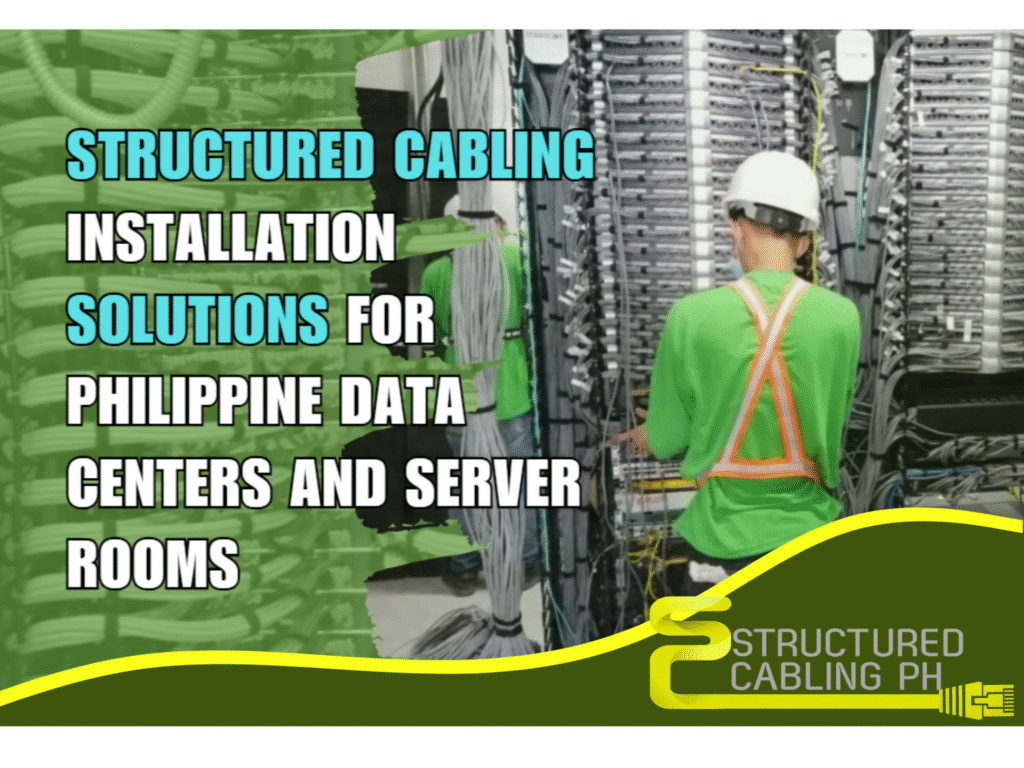
In today’s hyper-connected world, having a reliable, well-organized IT infrastructure isn’t just a luxury—it’s a necessity. For data centers and server rooms across the Philippines, structured cabling provides the backbone that supports everything from internet connectivity to data transmission, cloud services, and daily business operations.
So what exactly is structured cabling, and why is it so important for data centers and server rooms here in the Philippines?
Let’s break it down.
What is Structured Cabling?
Structured cabling is a standardized system of cables and associated hardware that provides a comprehensive telecommunications infrastructure. In simpler terms, it’s the organized way to set up your network wiring—whether it’s copper cables, fiber optics, patch panels, or server racks.
Instead of having a mess of wires going from point to point (which can be a nightmare to maintain), structured cabling creates a clean, modular, and easily manageable layout. This system not only improves performance but also makes future upgrades and troubleshooting faster and more efficient.
Why It Matters in the Philippine Setting
The Philippines is rapidly emerging as a digital hub in Southeast Asia. With the growth of local data centers, cloud-based services, e-commerce, fintech, and BPO industries, there’s an increasing demand for robust and scalable network infrastructure.
Here’s why structured cabling is essential in this context:
1. Handles the Heat—Literally
Server rooms in tropical climates like the Philippines face challenges like high humidity and fluctuating temperatures. A clean, structured layout reduces airflow blockage and heat buildup, helping maintain optimal equipment performance.
2. Supports High-Speed Data Transfer
As businesses adopt cloud-based tools, VoIP, and real-time applications, bandwidth requirements are rising. Structured cabling systems—especially when using Cat6/Cat6A or fiber optic lines—ensure that data can flow quickly and reliably.
3.Reduces Downtime and Maintenance
A messy cabling setup makes it hard to pinpoint problems. Structured systems are labeled, organized, and easy to navigate, allowing faster troubleshooting and minimizing business disruptions.
4. Built for Growth
Need to scale up your infrastructure? Structured cabling systems are modular, so adding new servers, switches, or workstations doesn’t require tearing down the entire setup.
What Does a Structured Cabling Solution Include?
A complete structured cabling installation for a Philippine data center or server room typically includes:
- Horizontal and backbone cabling
- Copper (Cat5e, Cat6, Cat6A) and fiber optic installation
- Patch panels and cable management systems
- Server racks and cabinets
- Testing, labeling, and certification of all cabling
- Documentation for easier maintenance and scalability
Certified installers ensure that your cabling meets industry standards like ANSI/TIA-568 and ISO/IEC requirements.
Choosing the Right Installation Partner in the Philippines
Not all cabling solutions are created equal. When choosing a provider in the Philippines, look for the following:
- Experience with local infrastructure and building codes
- BICSI-certified or manufacturer-certified installers
- Knowledge of tropical environmental challenges
- Strong portfolio in your industry (BPO, finance, healthcare, etc.)
A trusted partner will not only install your cabling but also design it in a way that saves time, space, and money in the long run.

